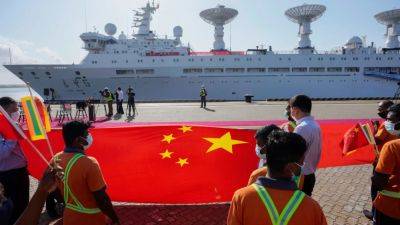Why China’s 5% GDP target has failed to reassure Asia
Global asset managers complained that more “forceful” steps are needed to boost growth and combat deflation. And disappointment was felt in some Asian markets that had hoped for a more vigorous response.
Yet the economy needs a solid foundation first. In a March 7 report, Fitch Ratings raised the spectre that underlying cracks in China’s foundations could lead to a “severe downside stress scenario” that would have a “dampening effect on international price pressures”.
Southeast Asia’s most export-reliant economies are having to make things up as they go along. Already, purchasing managers’ data in Thailand, Malaysia and Myanmar are below the 50 mark, which means activity is contracting. Thailand’s, in particular, came in at just 45.3 in February.
07:43
From economic ‘miracle’ to cautionary tale: Japan’s development and recession
12:53
‘Overtaking on a bend’: how China’s EV industry charged ahead to dominate the global market
Unfortunately, the NPC has done little, if anything, to demonstrate China is fixing cracks in the financial system to support new efforts to raise its economic game. Nor does Beijing seem willing to deploy stimulus to head off deflationary forces in the short term.
It’s not what officials from Tokyo to Kuala Lumpur had hoped to hear from Beijing. But the message is loud and clear: neighbours, you’re on your own.
William Pesek is a Tokyo-based journalist and author of “Japanization: What the World Can Learn from Japan’s Lost Decades”






